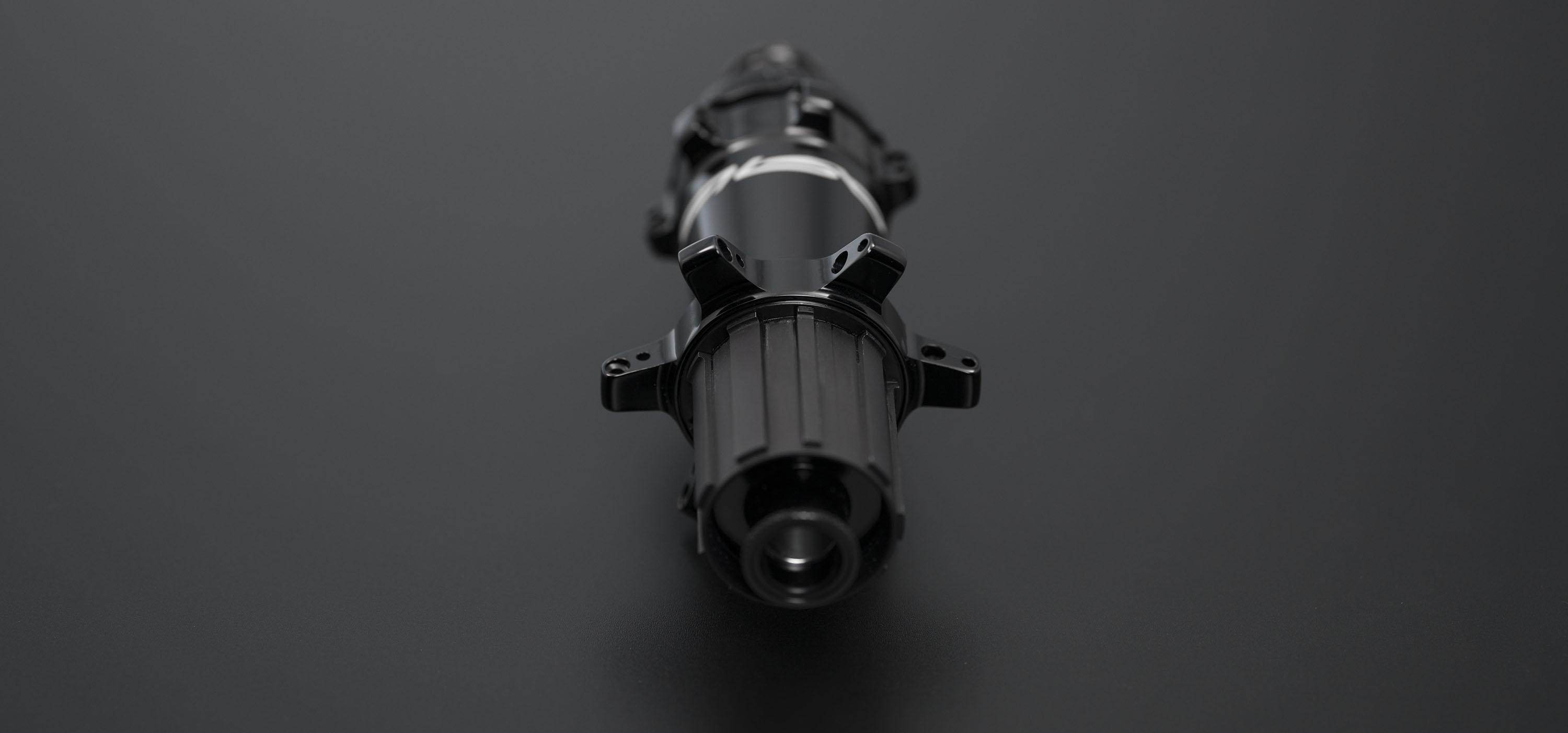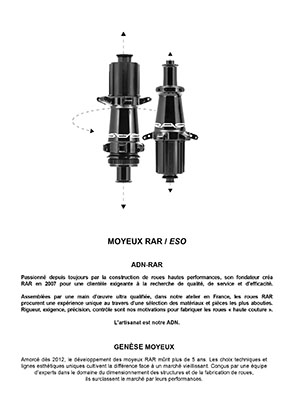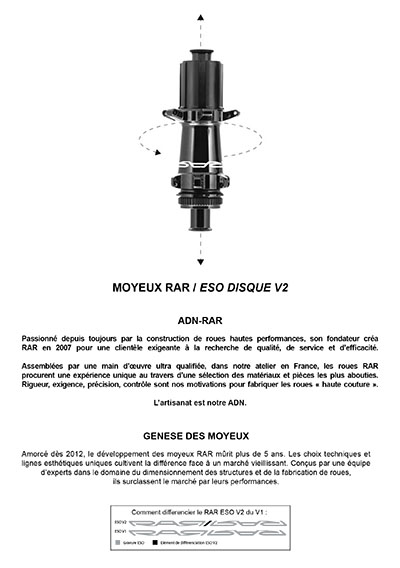No products
Product successfully added to your shopping cart
There are 0 items in your cart. There is 1 item in your cart.
Télécharger votre configuration en PDF
RAR ESO - FROM GENESIS TO PRODUCTION
We could have selected from a Chinese or European catalogue.
We could have designed and had it produced in Asia.
We could have manufactured in France, using the ideas of leading German manufacturers.
We could have made the front hub bodies in 3 parts.
We could have preferred the simple, economical 3 pawls mechanism to make lighter.
We chose the way of the difference.
"CULTIVATE THE DIFFERENCE"
2012: first drafts. We wanted an ultra high quality alternative. Geometry, mass, ease of adjustment, fluidity, and durability were to set the standard.
Our bet is to offer you the best: our RAR ESO hubs are 100% designed and manufactured in France and are merely performance and reliability oriented. We cultivate the difference facing a market where copies, inbreeding in designs and productions are too common.
From the performance-resistance-cost triptych, only two parameters can be chosen. Our choice: performance-resistance. The cursor has been placed very high.
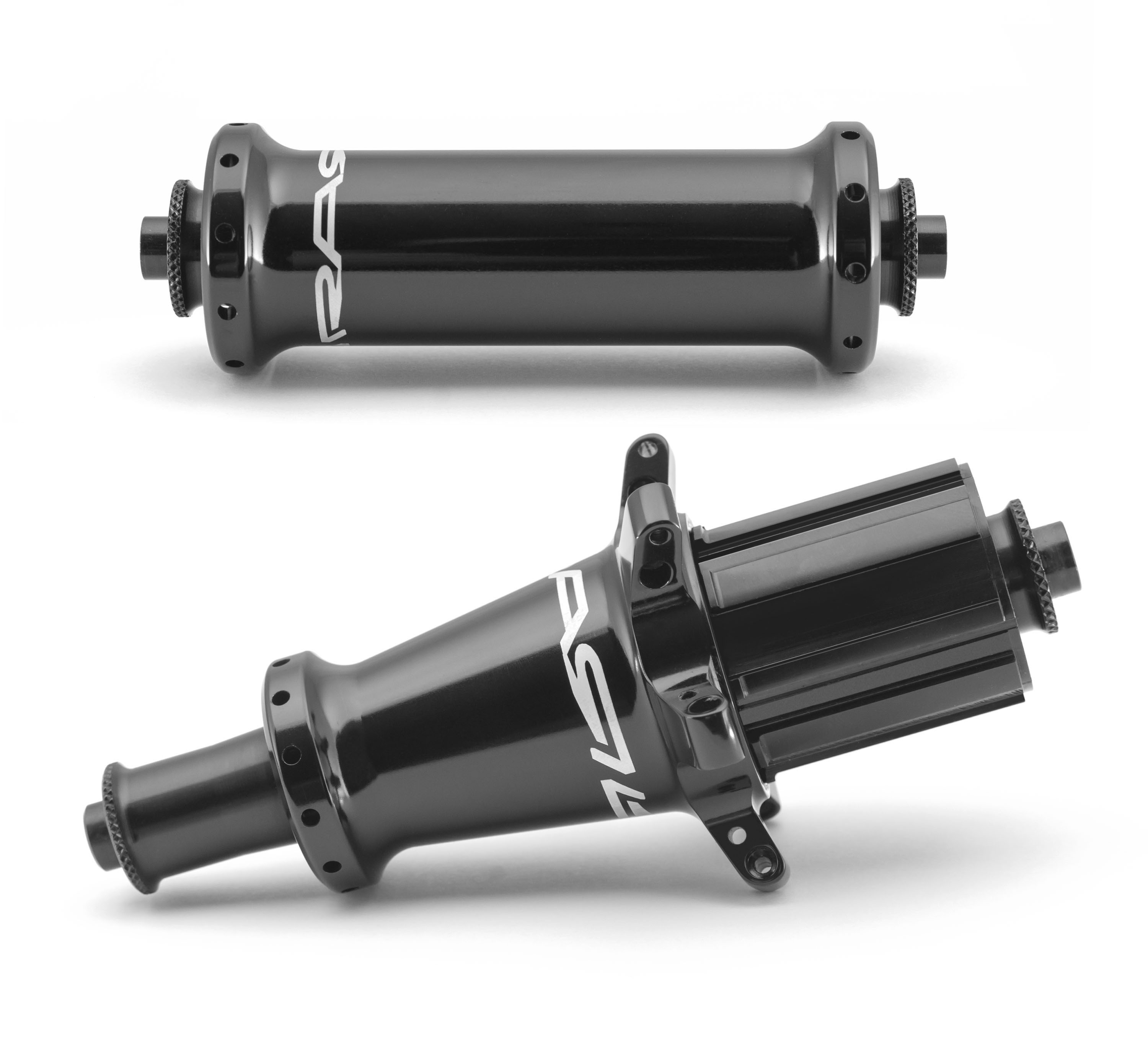
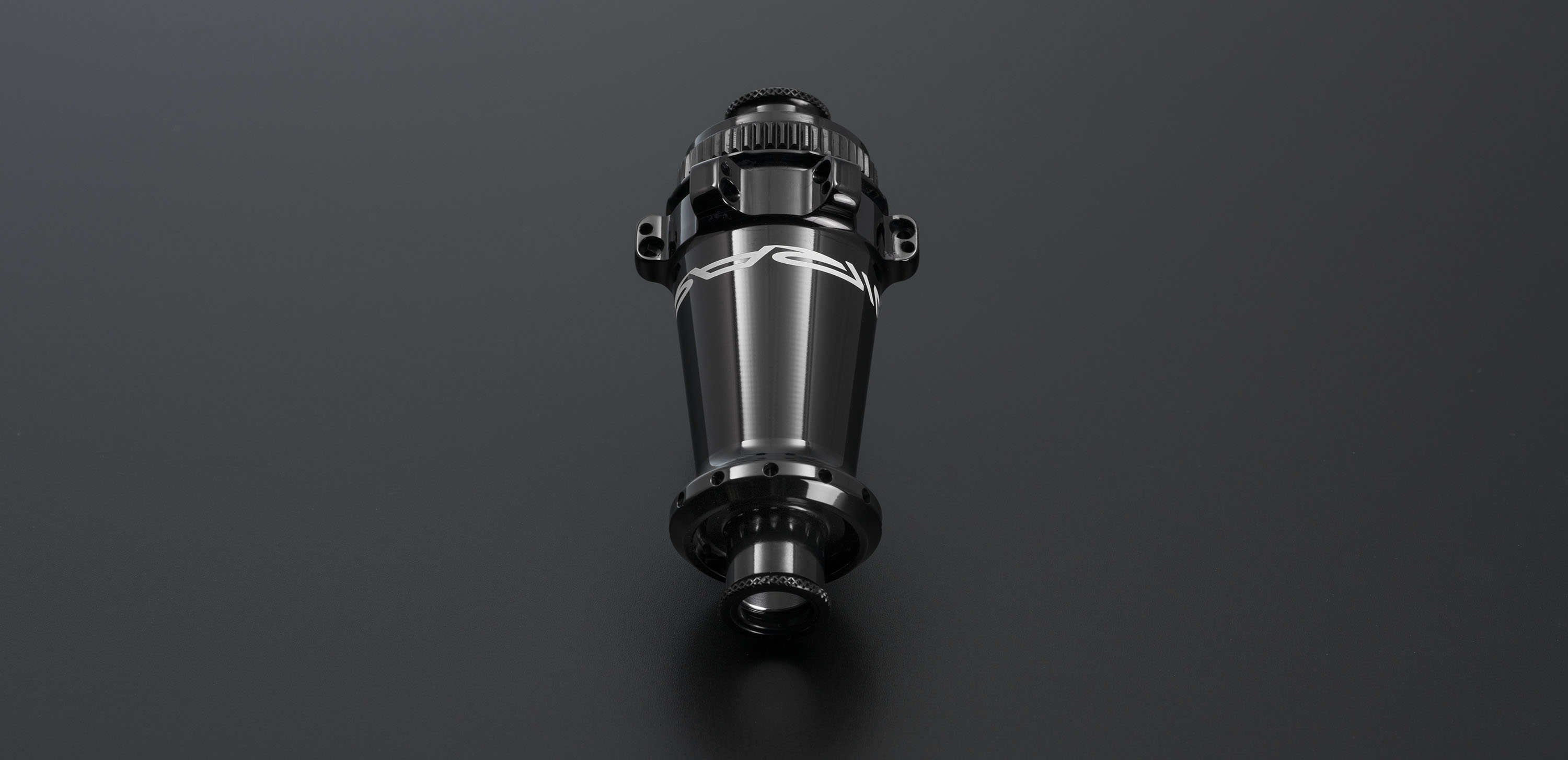
FINITE ELEMENT ANALYSIS
We remove every µm3 of superfluous material by structural calculations in numerical analysis; the finite element method.
Stress zones involve reinforcements.
Low-stress areas are machined in astonishing thicknesses.
The ultra-light final part offers extraordinary strength.
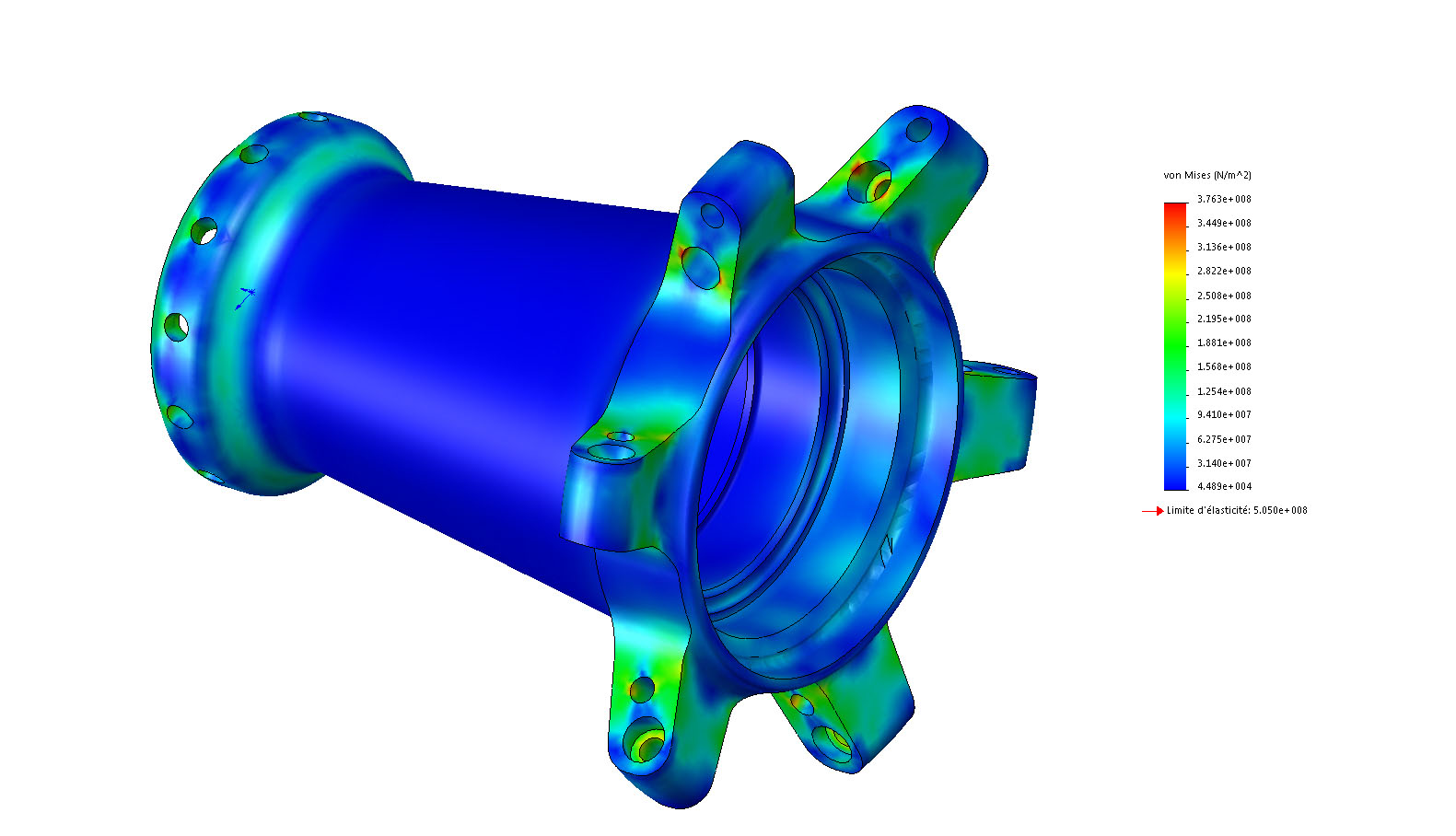
The stresses induced by disc braking are calculated to size the part accordingly.
The most extreme cases caused by one or more broken spokes are anticipated, modeled to adjust the body sizing to the unaffected areas overload. The damaged bottom spoke case is simulated on the left side picture here. The tensile stress of the top spoke pulls the flange with more force.

The fine meshing of the sensitive areas allows for a higher accuracy in the calculations.
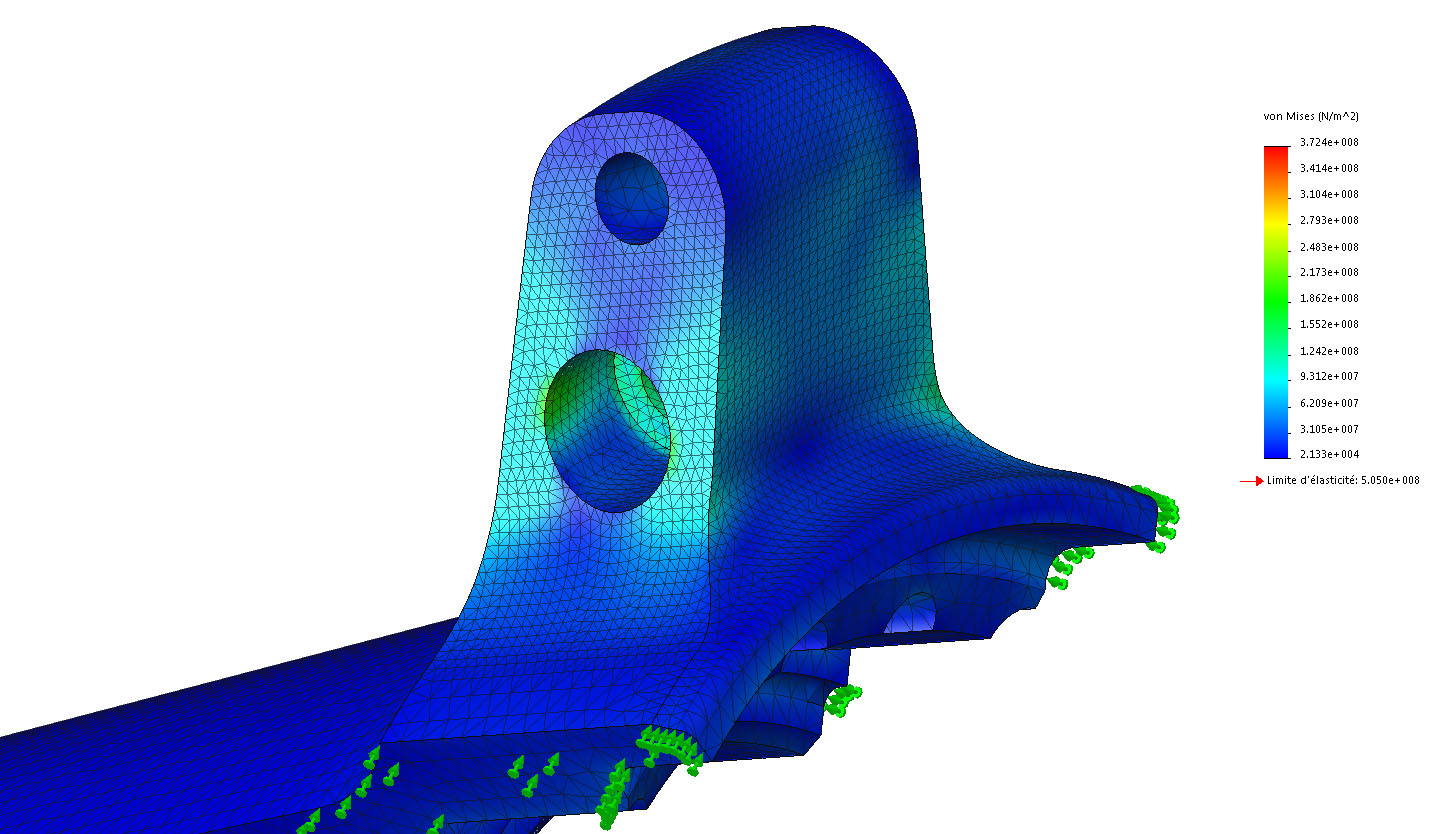
Continuity of form is the ideal mechanical situation for a revolution part. Thickening the wall sections to justify external millings after turning is visually flattering: the parts look more aggressive. This is the choice of some colleagues. Others assemble the front hubs in 3 parts for ease of production, cost and drilling flexibility. These two solutions remain nevertheless mechanically imperfect. Only the continuous shapes ensure the maximum combination of reliability and weight. We focus ESOs on ultimate efficiency: wall thicknesses are precisely dimensioned, without any fuss. The 7075T6 aluminium alloy was naturally selected for its maximum strength properties.

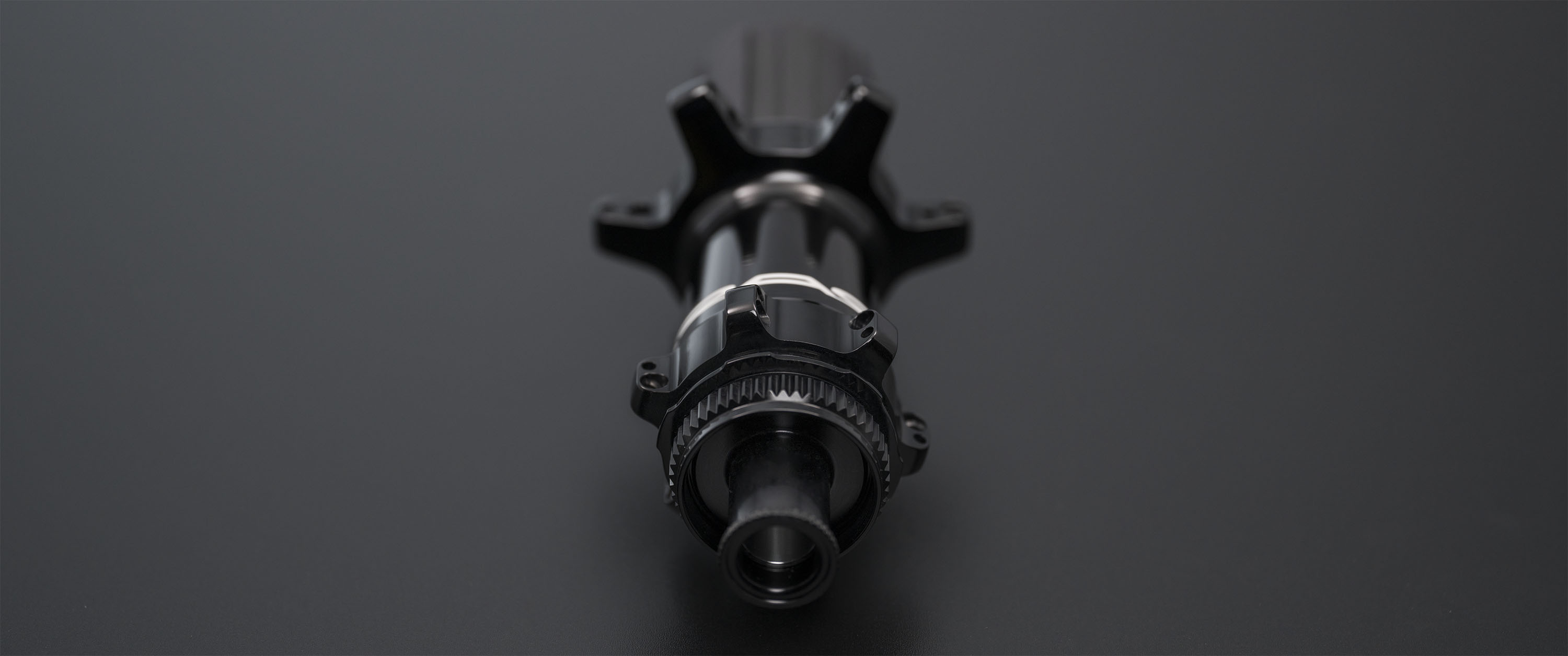
MECHANICS
A lightweight design traditionally works with 2, 3 or 4 teeth that transfer torque to a toothed ring This solution that comes with moderate durability is favored by many colleagues for its economic side.
Our choice is the one of durability with ratchets: the torque stress is spread over a contact surface about 20 times greater than the pawl solution. This reliability optimisation through the mechanical surface is enhanced by the material choice: steel. The parts that usually wear then have virtually infinite resistance. They require precision machining in an expensive material that is difficult to machine.
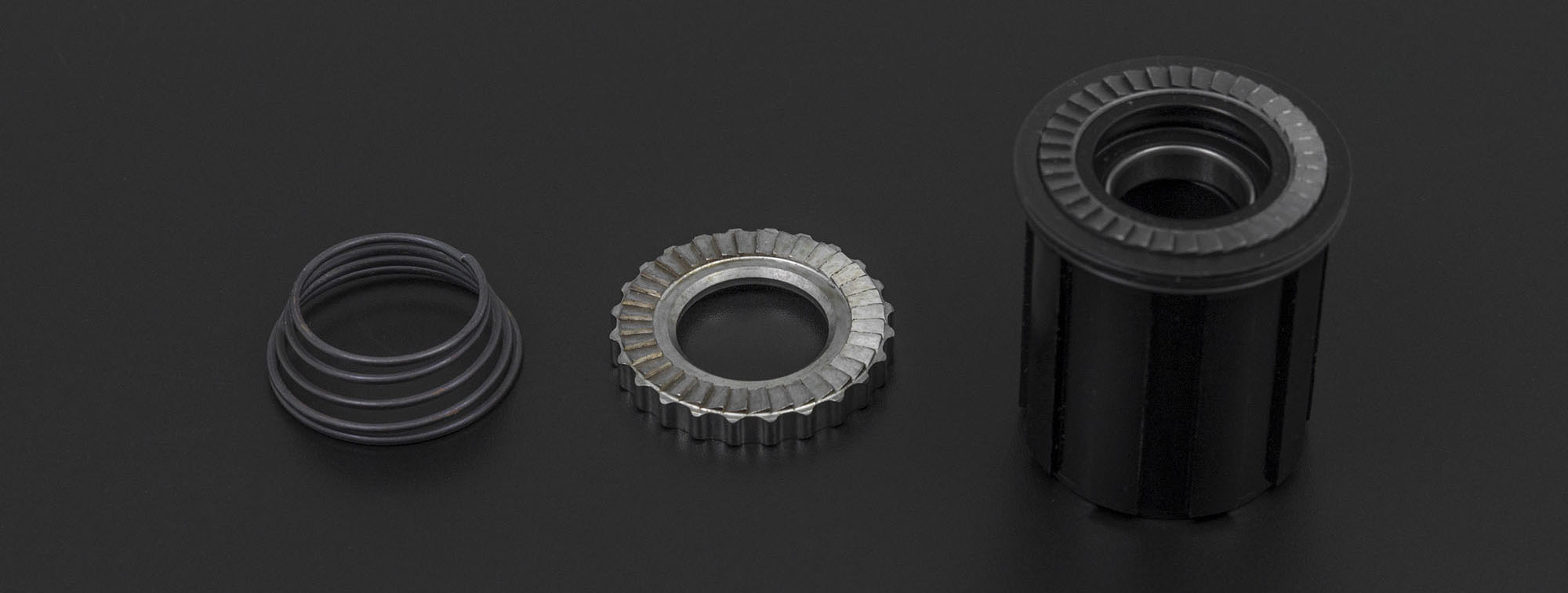
A ratchet is integrated directly into the freewheel body. The second is mobile and slides into the hub shell. They contact each other through a spring which presses against the hub shell: it ensures a quiet freewheeling operation thanks to a precisely dimensioned return force.
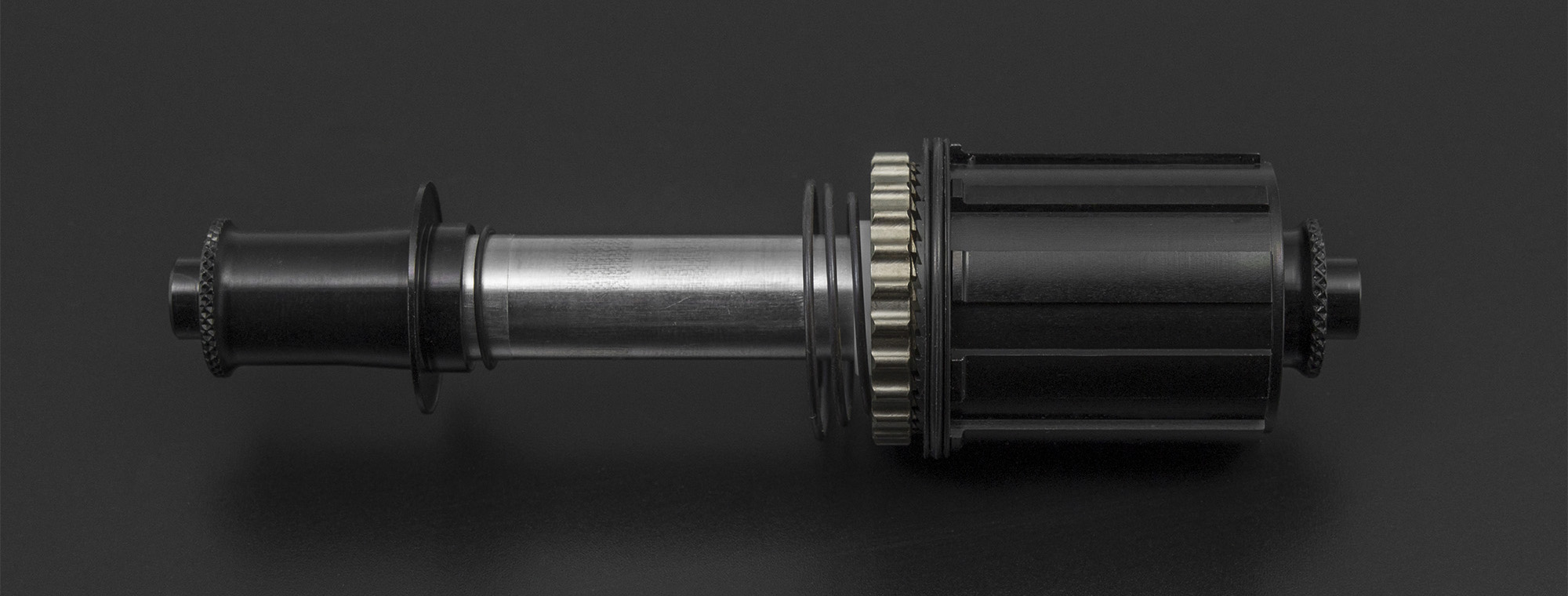
GEOMETRY
They benefit from an ultra-favorable sizing, more than a decade of research and testing on wheel performance.
The inter-flange spacing and the diameter of the spokes anchor point are their assets. The distance between the flanges favors the support of the rim through the spokes. The diameter of the spoke hooking circle also optimizes the angle the spokes take towards the rim. This gives the spokes a lever arm to transmit the torque from the hub to the rim.
We placed the cursor in favor of maximizing spacing and diameters, whenever necessary, at the expense of weight and material/machining cost. The finite element analysis and high precision of the machine tools then allows us to go for unprecedented thin walls.
There are three cases in our ESO range.
The front wheel for rim braking is symmetrical, the hub is also symmetrical: the force with which the spokes pull is the same left/right. The inter-flange spacing can therefore take advantage of the whole hub width. Beyond the intrinsic value of 83mm, the prowess is that of the monobloc body that is synonymous of maximum strength against the 3-piece design (flange-tube-flange) while the ultra low wall thicknesses make possible a complete, reliable hub at 62g. The hub shell is just over a third of this weight !

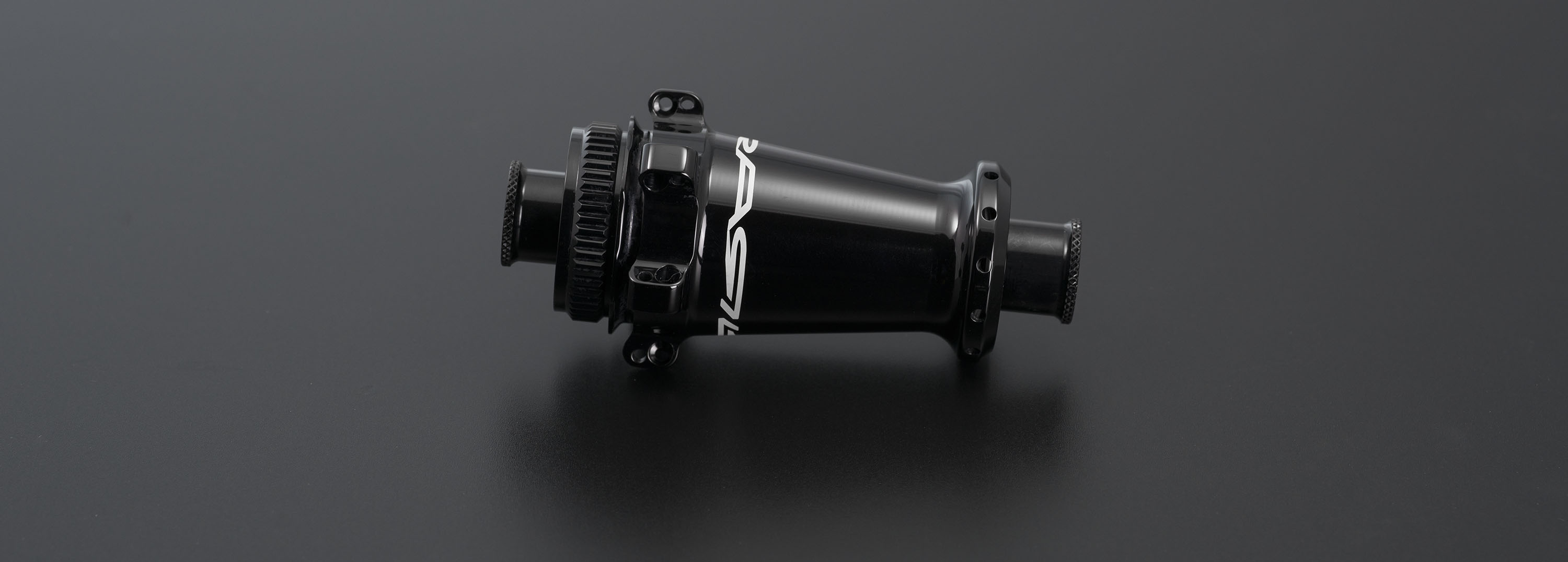
The rear hub for rim braking is asymmetrical: the cassette body pushes the freewheel flange towards the inside of the wheel. The flange/centre distances of the wheel are different left and right. The drive side spokes bracing angle is then crucial for the balance of the tensions and lateral stiffness. Optimizing its distance from hub center has a double influence on reliability and performance. Our solution is to anchor the spokes vertically to maximize the spacing which is 18mm-ESO rim brake. The average anchorage diameter of 54mm generates an excellent spoke lever arm on the hub.

This atypical shape generates peculiarities in the spokes tensions. The spoke located high on the flange has a greater influence than the spoke located underneath: its lever arm is stronger. First phenomenon: the tension of the upper spoke is lower than the tension of the lower spoke. About 10%. A rear wheel on an ESO hub has 3 different static tensions: the one on the opposite side of the freewheel, and two different ones on the cassette side. The second phenomenon is due to the power transmission dynamics: the "pusher" spoke facing forward loses tension when the "tractor" spoke facing backwards sees its tension increasing. We thus positioned the top spoke, under-tensioned statically towards the rear, and the lower spoke, over-tensionned statically, towards the front. While pedaling, the torque and the mechanical balance of the tensions is close to perfection.
Standard designs with "old-type" flanges work in the opposite way: the mechanical tensions of the spokes are balanced in static but unbalanced in dynamic.
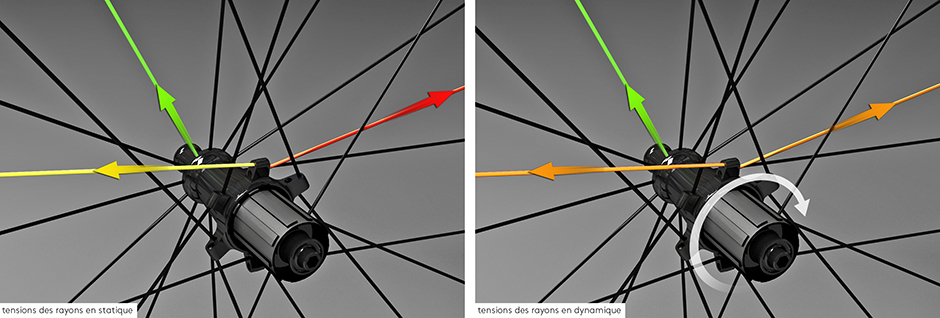
The disc range, is special: the front case corresponds to the rear one for rim braking: one side transfers torque, the other does not. The shape therefore has similarities, stemming from the one-sided asymmetry. The disc mounting spacing is quite moderate, so the disc-side flange position is not as critical as on the rear freewheel side. We then set the priority on weight savings with horizontal rather than vertical anchorage points.
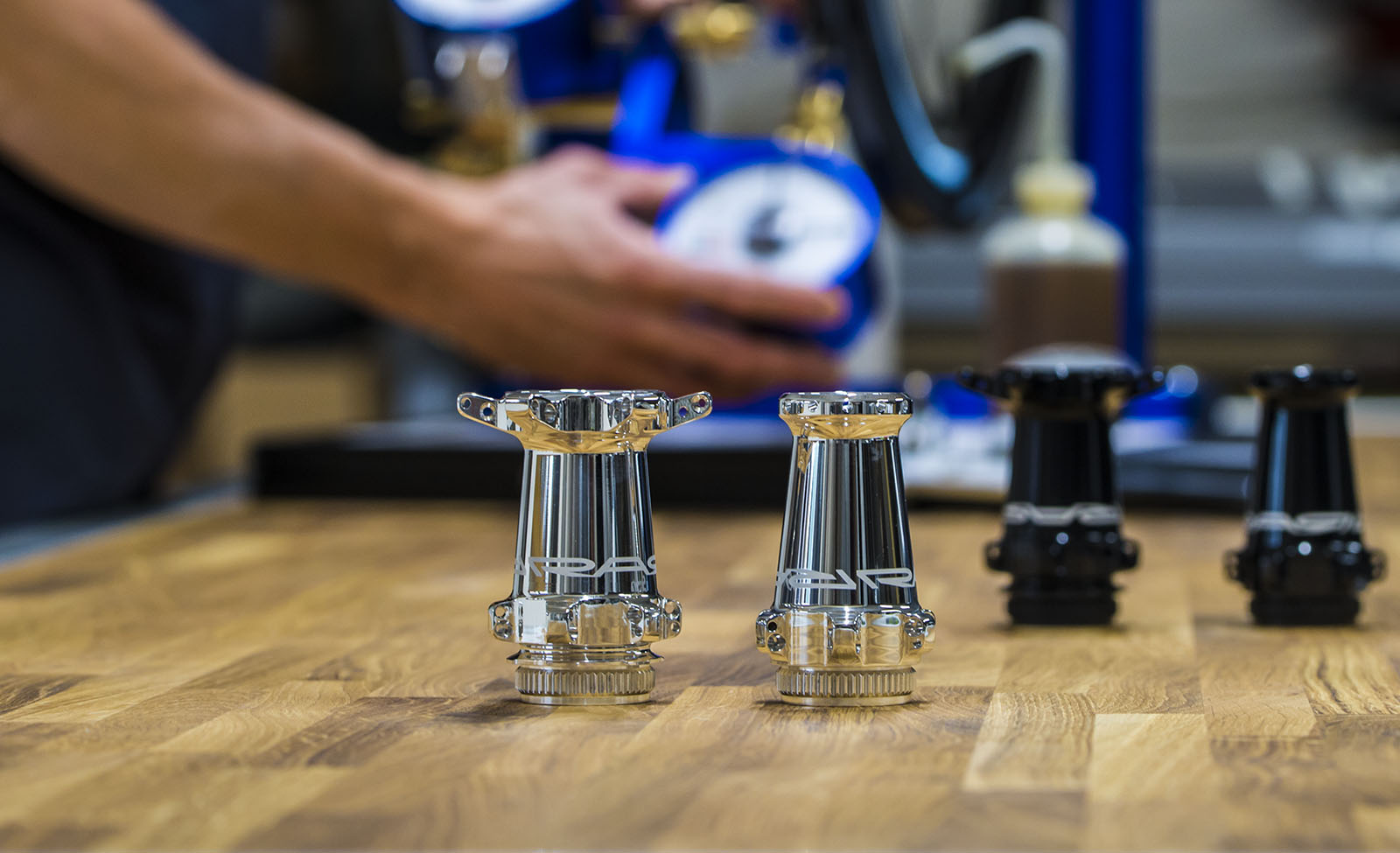
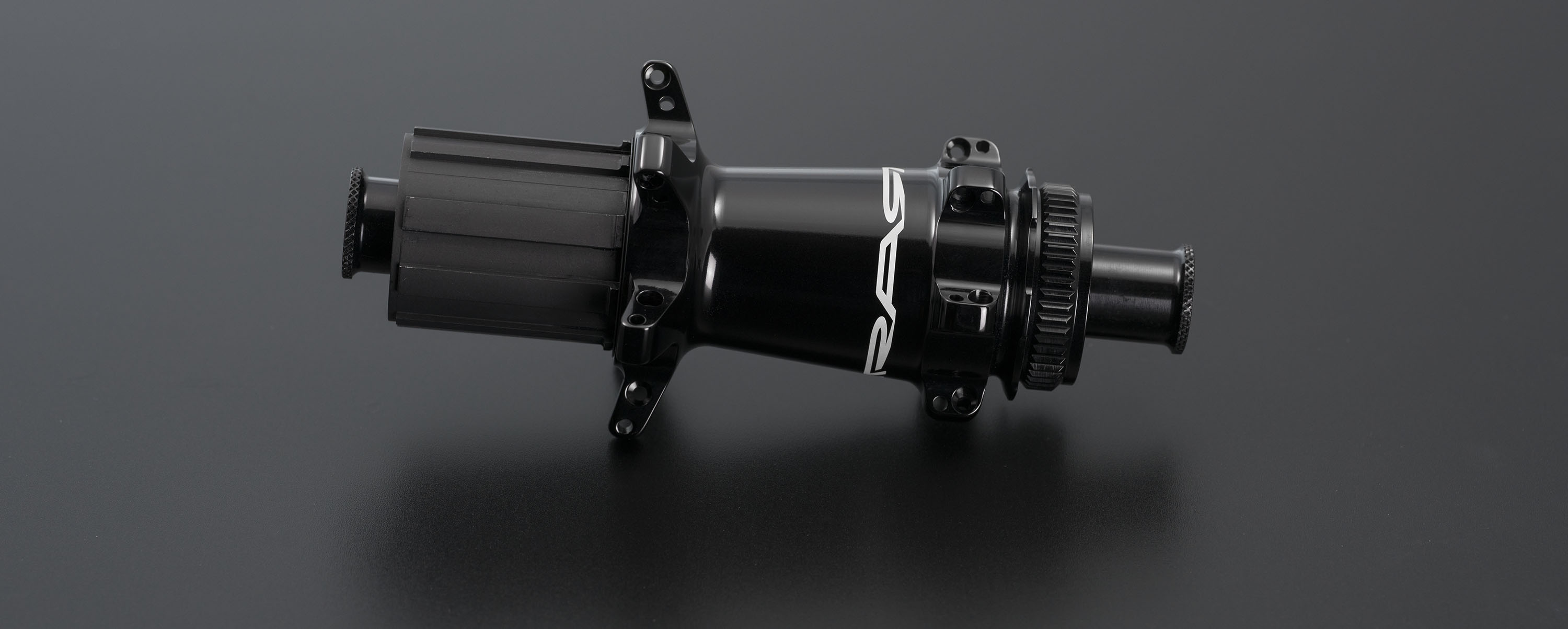
The special shape of the rear disk hub body with its inverted cone is the result of sizing optimization. A minimal wall thickness is required to handle the stress induced by the braking torque transfer and the spoke tension of the drive side flange.
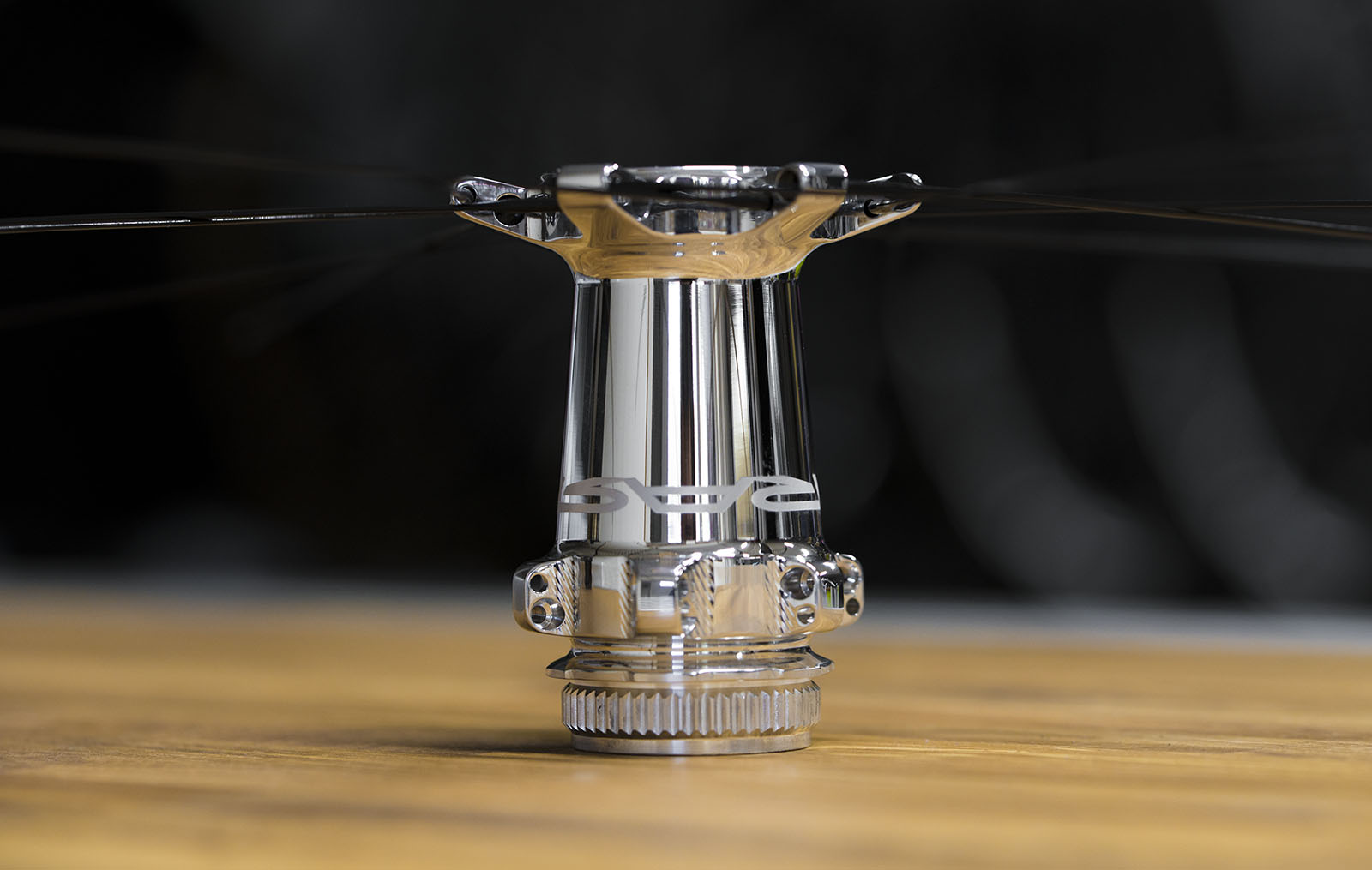
PRELOAD - version 1
Our requirement was a simple a stable adjustment over time. The ideal solution proved to be the "nut cap" screwed onto the shaft, which was placed against the bearing with an O ring in between. This system has a double advantage. The adjustment is simple: screwing the cap sets the preload and the play. The bearings are protected when the cap is screwed too tightly: the O-ring properties dampens the over-tightening.
The finely adjusted preload is achieved by starting from a position with play, with the wheel mounted and tightened on the bike, and then gradually tightening the nut until the play disappears. The ESOs are already adjusted when leaving the workshop, the force of the quick-release is already taken into account.
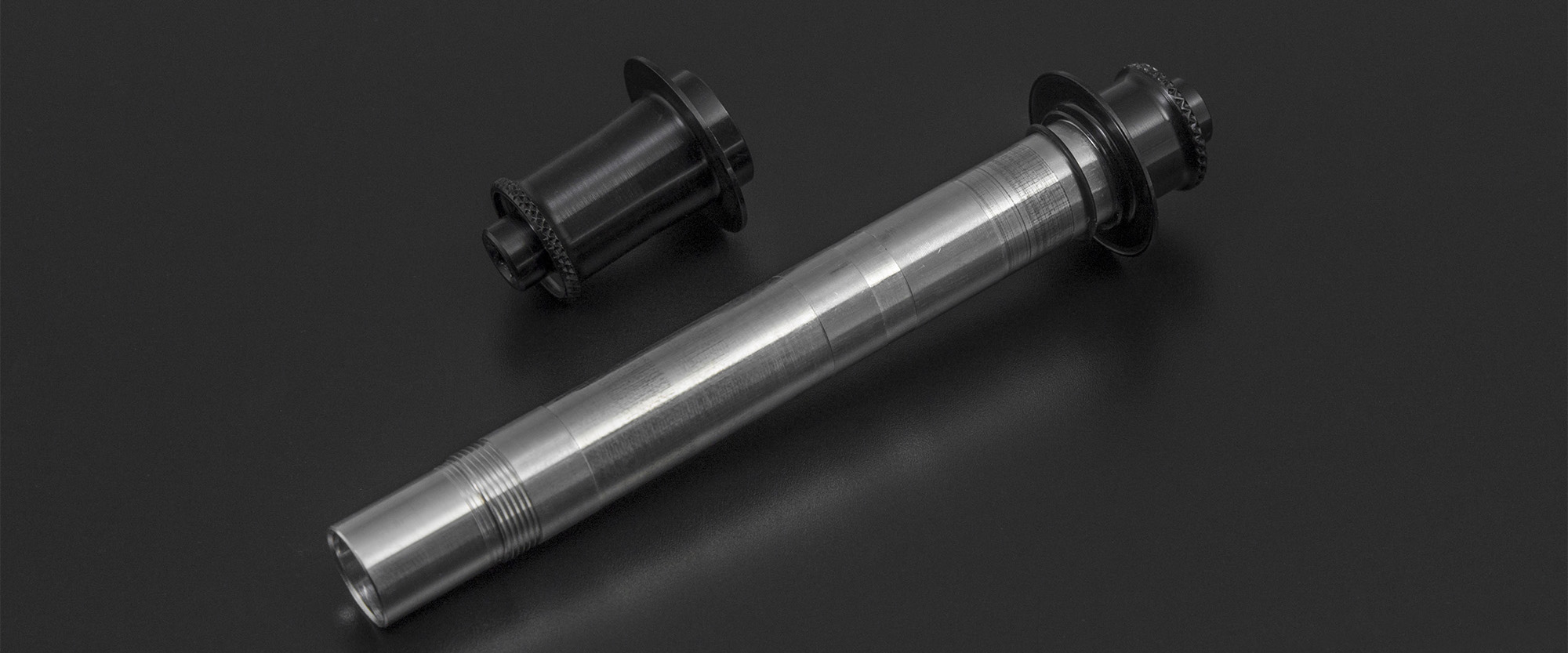
BEARINGS
In order to maximise reliability, we only use oversized bearings.
Our RAR ESO V2 disc brake hubset is built upon ISO 61902 bearings loaded with large diameter balls able to withstand high workload. The lower stress area of the hub shell, such as the caliper brake front hub or the non disc side of a front hub are fitted with ISO 61802 for weight savings while maintaining enough strength.
We assemble hubs on SKF productions, these are high performance radial cartridge bearings, CN standard clearance. Lubrication and seals offer a low friction coefficient and a very high endurance.
On special wheels we can also use CyclingCeramic hybrid ceramic bearings or SKF MTRX ultra strong bearings.
WEIGHT
Designed for ultimate performance, the ESO range is obviously ultra light. Even if it wasn't the top priority, improving performance obviously means saving weight.
ESO road rim braking FRONT 20t: 62g
ESO road rim braking REAR 24t: 163g
ESO road disc braking FRONT 24t: 84g
ESO road disc braking REAR 24t: 178g (+35g XDR full steel freewheel body)
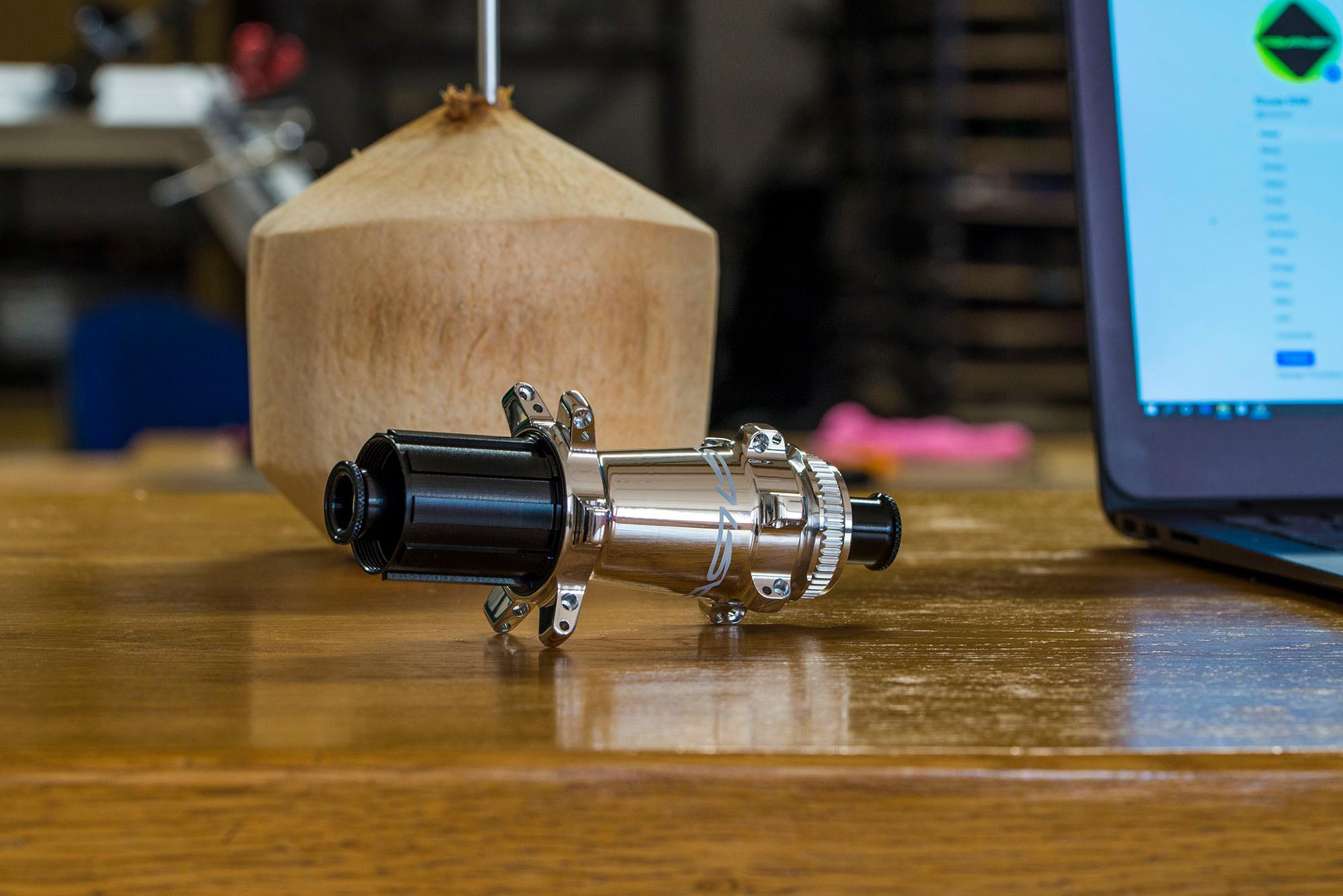
SPECIFICATIONS ESO hub range
| Rim brake V1 | Disc brake V1 & V2 | |||
| Front | Rear | Front | Rear | |
| Left to center distance (mm) | 41,5 | 34,5 | 22,5 | 32,0 |
| Right to center distance (mm) | 41,5 | 18,0 | 34,0 | 20,8 |
| Left side diameter (mm) | 27,5 | 27,5 | 44,0 | 45,0 |
| Right side diameter (mm) | 27,5 | 53,5 | 25,5 | 53,5 |
| Weight (g) | 62 | 162 | 82 (UL+: 78) | 178 (UL+: 172) |
Whenever the flanges have one pushing and one pulling spoke, the dimensions are measured in the middle of both.
MANUEL MOYEUX ESO V1
|
MANUEL MOYEUX ESO V2
|
